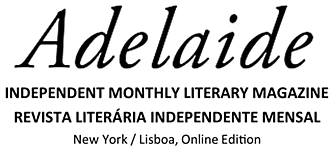1.Tell us a bit about yourself – something that we will not find in the official author’s bio?
The one thing that comes to mind is my love for travel. That’s not very original, but I’ve had some interesting experiences that might be considered out of the ordinary. I took a gap year before college, and traveled for several months throughout Europe and Asia. It was different back in those days, before the internet and smartphones. I didn’t have a set itinerary or reservations, just a backpack and a shoestring budget. I ended up in Nepal, and stayed for two months, trekking the Himalayas for several weeks. It was a formative experience; I was only nineteen years old. The following year, I spent a summer in Central America, and worked with an environmental brigade in Nicaragua. This was in the late 80s and at the tail end of the Iran-Contra War. I didn’t know much about politics at the time, and I was fairly naïve. The Sandinistas became involved with our small group of Americans, giving us tours of cooperatives and government projects. I remember one day when soldiers in fatigues, carrying machine guns, flooded into the plaza of Matagalpa in jeeps–there was a lot of drinking, dancing, and flag waving. To this day, I see the Nicaraguan Revolution as a complicated issue, and many people died and suffered. Shortly after that experience, I decided to study for a year in Peru through an International Program at my university. After completing my year of studies, and to the great surprise of my family and friends back home, I decided to extend my stay, marry, and start a family. That’s really the beginning of my journey as a writer, but all of these experiences have made their way into my stories in some form. My most recent adventure was visiting Morocco, before the pandemic hit.
2. Do you remember what was your first story (article, essay, or poem) about and when did you write it? Yes, and in some ways it was difficult. My first short story was published in the literary journal Natural Bridge in 2008. “A Glimpse of Color” is a sad, poignant story about a mother-daughter relationship, which has some details specific to my own relationship with my mother. I’m close with my mom, although it is a complex relationship as most are. The day I received notice in the mail about its acceptance for publication (in those days it was done by snail mail!) my mom was visiting from out of town, and she asked to read the story. I didn’t even consider the impact, or how close to the bone it was. Needless to say, we both ended up in tears, and there was lots of hugging and sharing involved. We both agreed that the story was about how we might have ended up, but thankfully did not.

3. What is the title of your latest book and what inspired it?
Fragile Saints was inspired by living in Peru and my years married into a Peruvian family. Most of my adult life was spent intimately connected to Peru, its people and culture. My oldest daughter was born there, and in some ways the novel is a gift to my daughters. Though Peru is not my birthplace or homeland, it is to my daughters. And this story is my way of sharing that connection with them, as well as an homage to the country. My experiences there, especially in the Andes, were immensely rich and sparked my imagination in a deep, profound way.
4. How long did it take you to write your latest work and how fast do you write (how many words daily)? This is hard to gauge. It’s not necessarily consistent. I teach creative writing at a college, and during the semester I tend to write less. I am reading more, and my writing is in the form of student feedback and comments. That takes a lot out of my creative energy. During time off, I can focus on my own projects. Lately this has been a few short stories and poems.
5. Do you have any unusual writing habits? Not really, though lately it seems I work with extremes– long dry periods with spurts of intense focus and hours of writing. I wish I were like my poet friend, who gets up at dawn every morning to write in solitude and serenity. I’m not a morning person! So usually I’m squeezing in time between work and making dinner, or sneaking into my office after the kids are in bed to write or edit. It all seems a bit haphazard these days. My one ritual is to write with a glass of ice water at my side, not hot tea like one might imagine.

6. Is writing the only form of artistic expression that you utilize, or is there more to your creativity than just writing? In addition to writing poetry and fiction, I am a visual artist. I create digital images from my photography. This has been a great passion lately, and I sell my work through Etsy or my website for Poetic Photo Prints. I’ve exhibited with some galleries, as well. I’ve been printing on metal, and I love the effect! My art began in the literary world. Years ago I started submitting my photography to literary magazines and anthologies, and they were quite often published. This endeavor took off without much thought or effort, and I’ve enjoyed the ease of it!
7. Authors and books that have influenced your writings? Early in my writing career, I was greatly influenced by magical realism and Latin writers. García Márquez’s One Hundred Years of Solitude, The House of the Spirits by Isabel Allende, and The Hummingbird’s Daughter by Luis Urrea were probably the most influential works. I’m also a huge fan of Louise Erdrich! I would say that there are so many writers and books that I can draw upon for inspiration, as well as for insight into craft. The list would be endless.
8. What are you working on right now? Anything new cooking in the wordsmith’s kitchen? My short story “Alteration” recently appeared in the March edition of Adelaide Literary Magazine. It stands alone as a story, but is really an excerpt from a longer work that is currently novella length. I’m still working on it and would like to see it reach a full length novel. I love the character Margaret, and her quirkiness and odd decision to live in bed. This story has been the most fun for me to write, and I often find myself laughing at the twists and turns. That gives me encouragement to keep going with it.
9. Did you ever think about the profile of your readers? What do you think – who reads and who should read your books? I’m aware that the largest audience for fiction is women. Men tend to read nonfiction. Even though I know my book Fragile Saints would appeal to book clubs and mostly women, the men who read it have praised it. Because of the historical, gothic elements and exotic setting, I think the story has a broader audience. It’s been recommended to have the novel translated into Spanish, which I would absolutely love to see in the future!
10. Do you have any advice for new writers/authors? This is nothing new. You have to be persistent and immensely patient. There are no short cuts, so you have to be in it for the long haul. It helps to have more than one project going at once, so that when you submit a short story, for example, you have other work to focus on. You may be waiting several months for an acceptance or a rejection, so write more stories, poetry, creative essays in the meantime. Also, the most important thing, in my opinion, is to see writing as more than sitting alone at a computer. Join a writer’s group, take workshops and classes, go to readings, become part of a community. The literary world is a community, and try to be a good literary citizen by supporting other writers. Buy their books, attend their readings, and engage. Lastly, I would say to develop a thick skin, don’t be discouraged by rejection, and revise constantly. That covers quite a bit!
11. What is the best advice (about writing) you have ever heard? I really enjoy Anne Lamott’s essay “Shitty First Drafts.” It’s from her book on craft Bird by Bird. I use it for my classes. It is a humorous look at the writing process and the importance of revision. I think there are some wonderful nuggets of truth there. Good writing is simply a lot of hard work, and every writer, no matter how experienced, has anxiety when facing the blank page. Also, somewhere, I’m not sure where, I learned about the importance of observation. Writing is really a study of humans. It’s about psychology and understanding human nature. You learn this through keen observation of people, their interactions, mannerisms, habits, and speech.
12. How many books you read annually and what are you reading now? What is your favorite literary genre? My favorite genre is magical realism. It has always captivated and called to me, both as a reader and as a writer. I also love writers who incorporate the natural world into their writing, such as Terry Tempest Williams and Annie Dillard. That’s what I most appreciated about Where the Crawdads Sing. I’m always reading, but it’s fairly eclectic. I have Eckhart Tolle’s A New Earth and Mary Oliver’s Devotions on my nightstand. The memoir Educated and the novel Purple Hibiscus by Adichie are my most recent purchases on Nook. That covers a lot of genres! But as I mentioned before, during the semester as a creative writing instructor, I spend most of my time reading my students’ writing. We are currently in the memoir unit of the course, and their stories are powerful and moving. It always shocks me, how much young people have to go through and survive. It’s often heartbreaking to read their stories. If someone I know publishes I book, which is fairly often in my literary community, the book has a place on my bookshelf.
13. What do you deem the most relevant about your writing? What is the most important to be remembered by readers? As a fiction writer, I want to explore and reveal the human condition, in all its beauty and pain– with honesty. I want to explore relationships and the full scope of their complexity. I don’t ever set out to be political or teach any moral lessons, but I do hope that by exploring our common humanity, there can be some insight and wisdom to be had. That is the hope–to in some small way contribute and add further meaning to our shared experiences as human beings.
14. What is your opinion about the publishing industry today and about the ways authors can best fit into the new trends? There is a lot happening right now in publishing. I think the focus on inclusion and diversity is the most important and timely. Giving a platform to previously underrepresented authors is long overdue. It’s important to stay informed. There’s always change, so being adaptable and willing to learn is a must. Technology and the digital world is both a blessing and a curse. It’s been a blessing during the pandemic. The hardest part for me, I think due to the digital world, is that the market is saturated. It must be hard for readers to discern what to read. Hopefully good writing will always rise and surface from the masses.



















